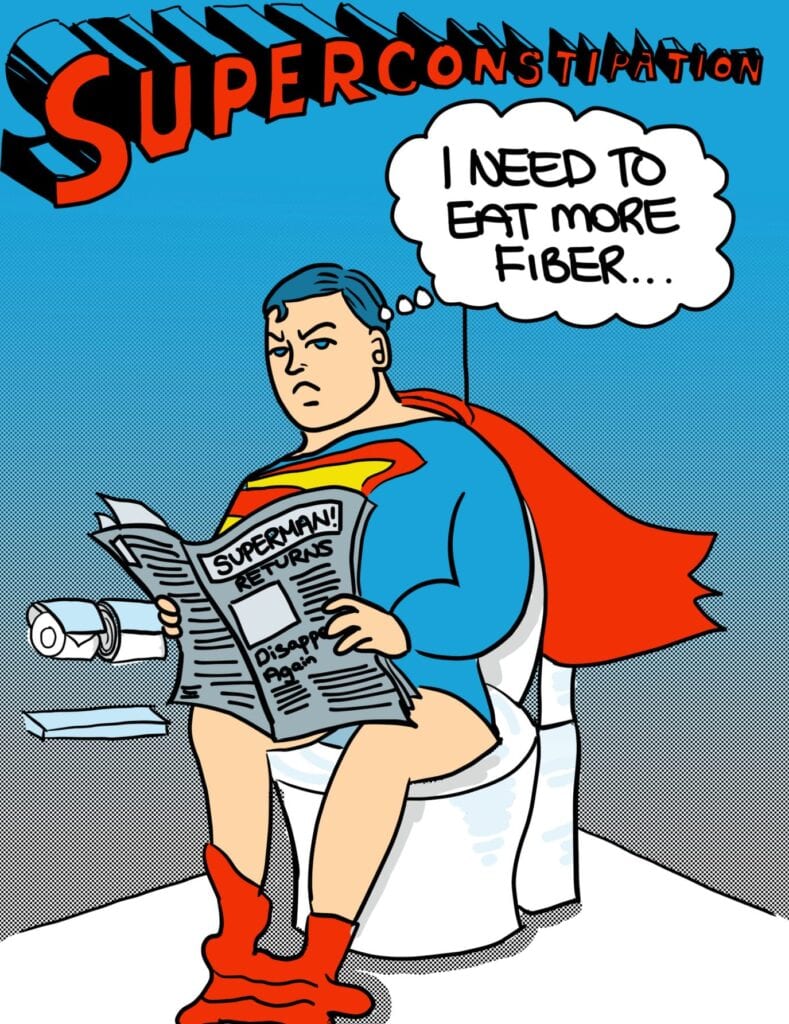
Constipation is one of the most common health complaints. It’s defined as 3 or fewer bowel movements per week that are difficult to pass. We like to support folks in aiming to have at least 1-3 bowel movements per day where the stool is well-formed but not difficult to pass.
While many factors can cause or contribute to constipation, there are some general principles that can provide an excellent foundation for improving bowel movements.
(1) Dietary Fiber:
Fiber is not absorbed by the body, so it adds bulk to stool and supports motility (a.k.a. movement) of the intestines. It also helps feed healthy microbes. Some examples of fibrous foods include dark leafy vegetables, green beans, asparagus, raw or lightly sautéed carrots, whole grains, beans, and avocados.
(2) Adequate water:
Fiber and water go together! Fiber binds water in the stool, so not enough water can play a big role in constipation. On an empty stomach, a big glass of water stimulates stretch receptors in the stomach, encouraging a bowel movement. This is referred to as the “gastro-colic reflex.” I often encourage patients to have a nice tall glass of water in the morning to encourage this natural response.
(3) Exercise:
Move your body, move your bowels! Regular exercise stimulates blood and lymph circulation, resets stress hormones, and in addition to a whole host of other benefits, encourages the GI tract to eliminate regularly.
(4) Bitter foods:
The entire GI tract is lined with bitter taste receptors, which stimulate saliva productive, stomach acid, digestive enzymes, and intestinal motility. Ever notice how your morning coffee tends to keep you regular? This is in part due to the bitter molecules present. Other bitter foods include leafy greens (this is why we historically have eaten salads as appetizers) and unsweetened dark chocolate.
(5) Postural support:
My favorite recommendation to make for patients is the “Squatty Potty”, or a similar bathroom stool – no pun intended. Sitting on the toilet in a squatting position with knees bent and feet slightly raised allows proper pelvic muscle alignment to encourage complete emptying.
If these tricks don’t do it for you, our doctors would love to chat with you about how we can support you. Many medical conditions and prescription medications can contribute to constipation, so it can help to have someone walk through it with you. In the meantime, we hope these basic practices encourage happy and healthy bowel movements!
